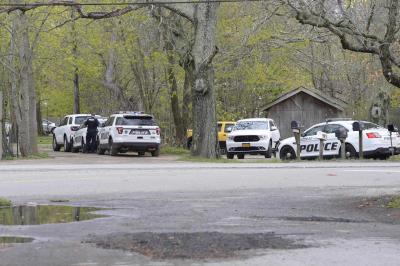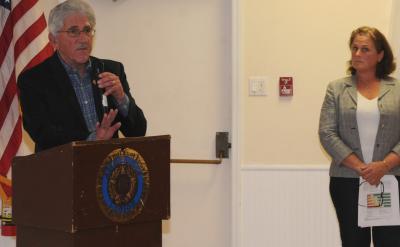‘Tenants at Risk’; Two Arrested
‘Tenants at Risk’; Two Arrested

East Hampton Town Police, along with code enforcement officers, raided a Springs-Fireplace Road residence on May 4 and arrested two men. Nine people, including the two, were given tickets to appear in court on a variety of charges related to the illegal conversion of a residence into a multi-unit dwelling.
Carmen Rocio Yamba Tenezaca, 30, Jaimo Uzcha Namina, 31, Wilson Guillca-Satian, 30, Melida Yamba Tenezaca, 33, Jose Donaie, 40, Angel Uzcha, 32, Angel Maza-Namina, 32, Rafeal Felix Llauri, 23, and Mancayo Arnulfo Rivera, 27, were charged with multiple violations of the town code, including exposed wiring, lacking smoke or carbon monoxide detectors in residential spaces, illegal change of use, overcrowding, lack of building permits and certificates of occupancy, litter and debris on the premises, and more, 39 citations in all. Besides the nine adults, four children were found to be living in the house.
The owner of the property, Leslie Cooper Life Estate, was also charged with 39 counts. All are scheduled for arraignment on June 13.
Mr. Namina and Mr. Rivera were taken into custody. Mr. Namina was charged with violating a court order of protection held by one of his housemates. Mr. Rivera was said to have failed to appear in court in answer to a drunken-driving charge. Both were later released on bail.
“This morning’s coordinated efforts by our public safety departments uncovered deplorable conditions inside a single-family house that was being used as a multi-family residence,” Betsy Bambrick, head of code enforcement, said in a release last week.
The nine individuals named, along with the property owners, will also be charged under the town’s new rental registry law. “The self-inspection checklist that is required as part of the rental registry process would have identified all the health and safety deficiencies at this house,” Town Supervisor Larry Cantwell said. “The landlord’s failure to go through the process and register their rental property put all these tenants at risk, which is something the town will not countenance.”








